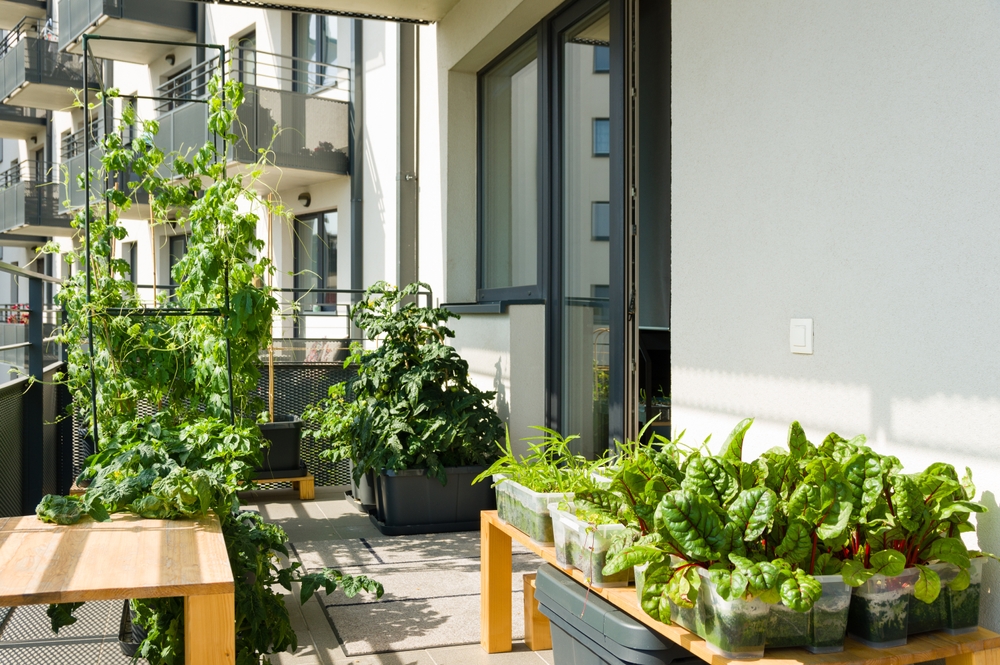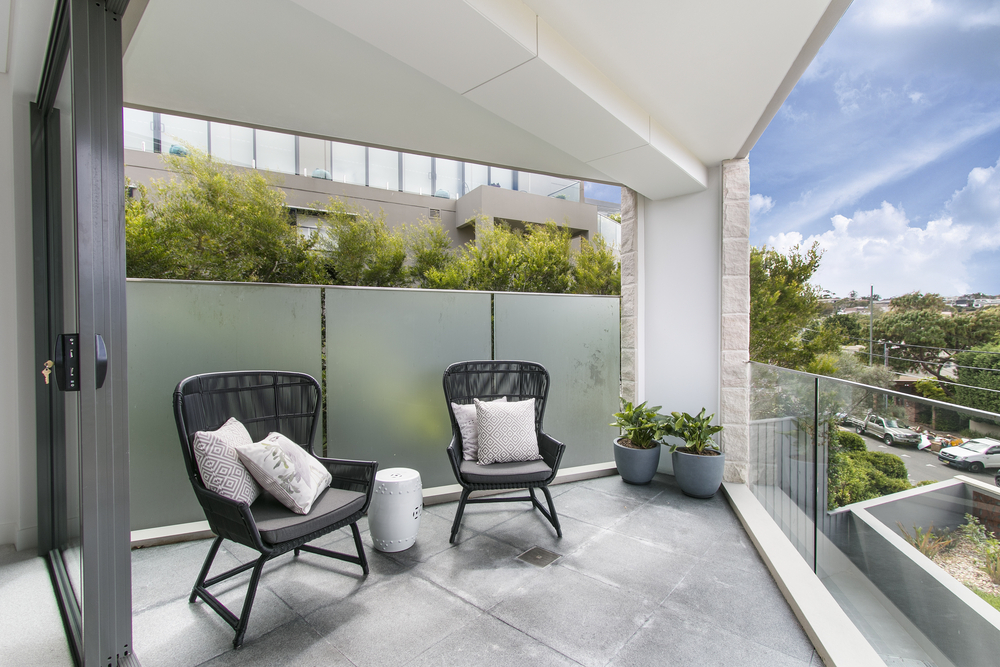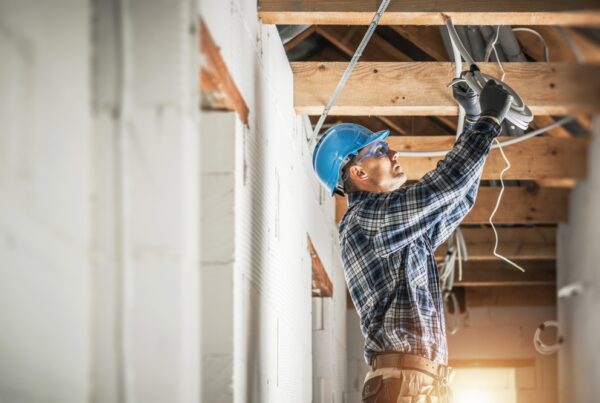A balcony is a wonderful asset to have but when it’s located in a strata title development, there are often several rules and restrictions regarding its use and upkeep.

It can also be somewhat of a grey area when it comes to understanding who’s responsible for dealing with these issues.
Being on top of balcony maintenance is a vital part of your building’s upkeep, so it’s important to understand what to expect.
Who is responsible for balconies?
A common misconception in strata is that balconies are the sole responsibility of the body corporate, and the owner has no obligation to maintain it. This is incorrect.
So, who is responsible for balconies in your strata scheme?
Like many things in strata, it really depends, and you are always best to check your by-laws and building plan. Those documents should provide clear information on which areas belong to lot owners and must therefore be maintained by owners, and which are common property and subsequently a body corporate responsibility.
In general, there are parts of the balcony that are usually owned by the lot owner and parts that are considered common property, and therefore body corporate responsibility.
The balustrade or exterior boundary of the building is usually common property with the main exception being balconies that face exclusive areas that belong to the owner. In this case the balustrade will be considered owners property and responsibility.
Balcony tiles are usually considered part of your lot and therefore a lot owner responsibility. However, the waterproof material under your tiles and the concrete slab on which the balcony sits are generally body corporate responsibility.
Responsibility for balcony repairs under different format plans
Queensland has two types of subdivision format plans relating to strata buildings. The definitions of common property and lots are different depending on what type of format plan a building falls under.
Building format plan balcony maintenance
All vertical developments no matter the number of levels will be classed under the Building Format Plan (BFP). Under this format plan the boundaries between lots and common property are measured from the centre of ceilings, walls, floors and doors.
For balconies in a Building Format Plan the body corporate is usually responsible for:
The outside of the building.
Railings or balustrades on, or near, the boundary between common property and a lot, including the exterior portion of a balustrade on a private balcony.
The roof of the building.
Lot owners are generally responsible for:
Doors and windows leading onto a balcony that forms part of the lot.
Standard format plan balcony maintenance
Standard format plans (SFP) are generally used for townhouse developments or gated communities. Under this format plan the boundaries are measured the same way that a house lot would be measured – from pegs in the ground.
The body corporate will usually only be responsible for maintaining things like the roads, gardens and lawns on common property as well as the utility infrastructure. This means that balcony maintenance in most cases will be the responsibility of individual lot owners.
The lot owner is usually responsible for maintaining:
The outside of the building within their lot boundary (including exterior roof, walls, doors and windows).
Balconies.
Exclusive use areas that the owner has the benefit of.
Please be aware that this should only be used as general advice and guidance only. Individual circumstances will differ widely amongst buildings. What is applicable for one scheme may not be the case in another scheme – even if on the face of it they are very similar.
Painting maintenance
Steel and concrete balcony balustrades need regular painting to help prevent rust and seal the structure. Wooden balustrades might not need painting but will need to be regularly inspected and treated for timber pests and wood rot.
When issues such as these occur, lot owners need to notify the body corporate as soon as possible so that the issue can be properly dealt with and responsibility for repairs assigned.
Use of balconies
Storage and fire risks: Balconies should not be used for storage of goods and other materials. Additionally, the storage of certain materials such as BBQ fuel or white/electrical goods on balconies can increase the risk of hazards such as a fire.
Cardboard, furniture and cushions etc. can also provide fuel that will compound the effects of a fire.
It is strongly recommended for each balcony to have a fire extinguisher. In the event of a small fire this may be sufficient to prevent it spreading further.
Overcrowding: Balconies should not be overloaded as a large number of people may exceed of the maximum design load of the balcony.
Owners of older balconies should always be aware that their balconies capacity may have decreased due to age and deterioration.
Balustrades: People should never sit on or lean on balustrades as there is a risk of falling over. Additionally, objects that lean on the balustrade may exceed the lateral strength and lead to failure.
Water: Water accumulating on a balcony can lead to damage of the structure particularly if the membrane has deteriorated or not installed. The effect of water ponding on a balcony is exacerbated if there is inadequate fall away from the building and/or drainage is blocked.
Balcony drainage points balcony should be cleaned regularly to ensure adequate water flow. Pot plants should not be overwatered and should have saucers to trap any overflow that are regularly emptied.
Furniture and plants: Planter boxes should be properly water tanked and drained to ensure water cannot escape and damage the structure on which the planter box is located.
Lightweight outdoor furniture should be removed when not in use, particularly if windy conditions are forecast. It is possible that furniture may be lifted from the balcony and cause damage to common property or cause an injury to another person.
Barbecues: Barbecues should be located at least 500 mm from any wall, ignition source or flammable material.
Regular cleaning should be undertaken, and gas bottles and connections should be regularly checked to ensure there are no leaks. Electric barbecues should be inspected by a suitably qualified electrician. Barbecues should not be left out in the weather as this may allow water to enter which could lead to a short circuit with the possibility of fire or injury.
Smoking: For smokers there should be heavy, high sided ashtrays which are made from materials such as enamel so that cigarette butts cannot burn through the ashtray igniting furniture or other chattels on the balcony. Cigarettes should be fully extinguished to ensure there is no possibility of these being an ignition source.
Laundry and washing: Generally, you can only hang washing on your balcony if it can’t be seen from the street below or the common property. Hanging washing on the balustrade/railings is usually prohibited as it may pose risks like damaging property, falling to the ground, and injuring someone as well as detracting from the aesthetic appeal of the property overall. It is important to check the by-laws before hanging any washing out on your balcony.
Conclusion
The use and maintenance of a balcony is a shared responsibility between the lot owner and the body corporate. A clear understanding of the roles and good communication are the key to ensuring your scheme’s balconies remain a safe, well maintained, and valuable asset to your strata community.









